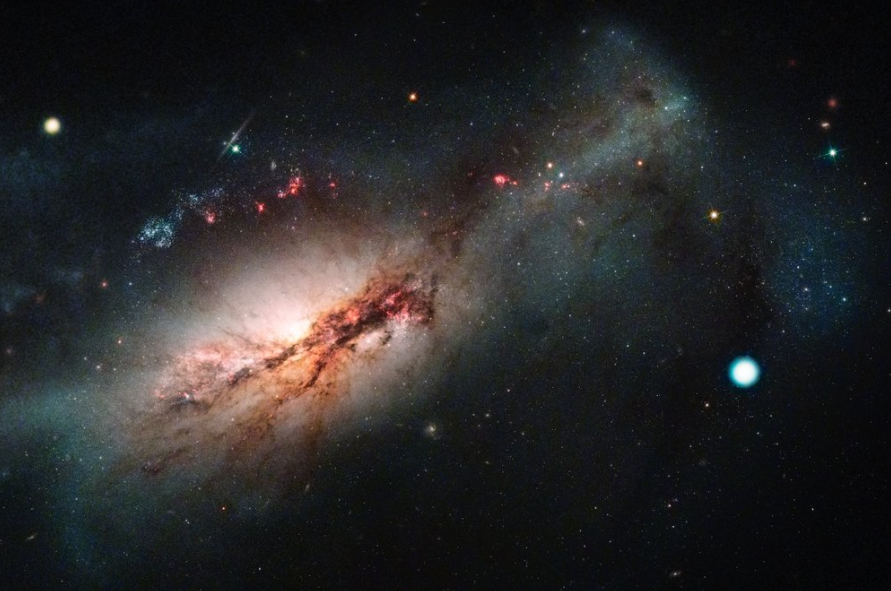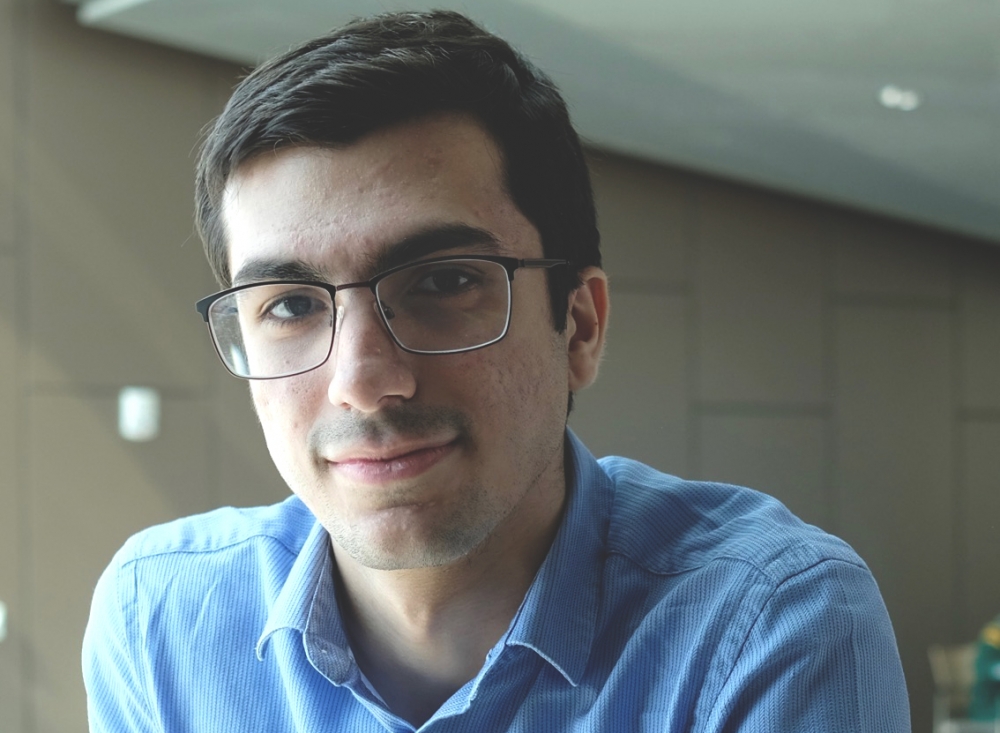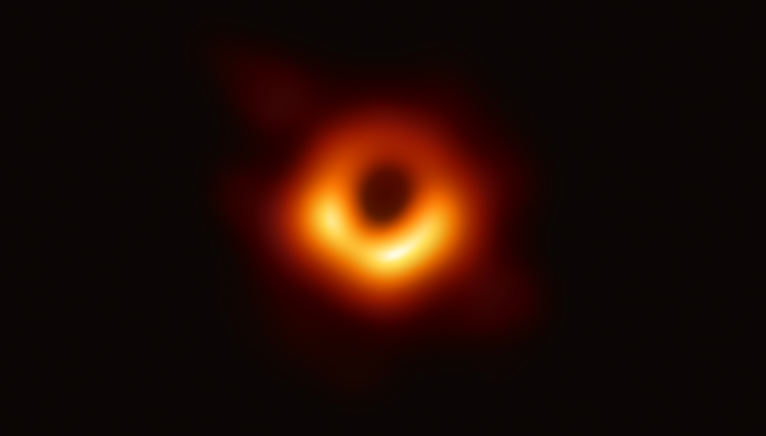
Looking Deep into Space

Setting their sights on the black hole at the middle of Messier 87 — a supergalaxy 53 million light years away in the constellation Virgo — the scientists of the Event Horizon Telescope (EHT) collaboration knew they had their work cut out for them. Not only were they attempting to capture an image of an object that is by definition too dark to see, the one they were aiming at was 318 quintillion miles away.
Then an undergraduate at the University of Massachusetts, Boston, Joseph Farah was among those researchers. Now a UC Santa Barbara graduate student, he still remembers well the challenge he faced with them in 2018.
“The supermassive black hole at M87’s core is six-and-a-half billion times the mass of our Sun, and it is many times bigger than our entire solar system,” Farah said. But at its distance, he explained, the black hole would be smaller to our eyes than an atom. To directly image the exceedingly distant object with high enough resolution, multiple arrays of telescopes at eight observatories around the globe had to be tightly synchronized and pointed at M87, in the hopes that they each could capture enough good information simultaneously.

Photo Credit: EVENT HORIZON TELESCOPE
It was no small feat. Even with the precision and resolution they had, just getting a clear shot at the black hole would take a bit of luck and excellent timing. But in 2019 the collaboration produced the now-iconic picture of M87, an image of hot, luminous gases flowing toward the hole’s event horizon constructed by taking the massive amounts of data gathered by all the telescopes and creating a composite image. It was the first image of its kind, not only marking the first direct observation of a black hole, but also allowing for more direct calculation of its mass and more insight into black hole formation.
With that achievement unlocked, Farah, now conducting research with UCSB physics professor Andy Howell at Las Cumbres Observatory, is on to a more difficult target: the supermassive black hole in the center of our own galaxy, Sagittarius A*. At 4 million times the mass of the Sun and 26,000 light-years from Earth, the black hole is smaller and closer than M87. But its size also means SgrA* evolves more rapidly than the behemoth in the Virgo constellation.
“If you’ve ever tried to take a picture of a fast-moving object, like a toddler, or a car, and you leave the shutter open for a while, you get a very blurred image,” Farah said. Likewise with SgrA*, he explained, the speed at which it evolves makes it a challenge to get a clear picture. And because the telescopes are peering through our galaxy, light and other objects can interfere with their measurements.
Enter Farah’s imaging method, one that through sophisticated algorithms, a grounding in unbiased data and constraints based on reasonable physics assumptions, separates strong data from weak in the flood of information from the telescopes’ observations. There could be an obstruction causing a distortion, or the instruments might not be well aimed at the compact radio source at the center of the galaxy.
“In a broad sense, we are identifying times where the interferometer is optimally oriented toward the source,” Farah said. The weaker data can then be discarded in a process akin to editing unnecessary footage out of a video. This gives the astronomers the ability to better piece together the often sparse chunks of meaningful data.
The method, which is to appear in a paper published in the Astrophysical Journal Letters, earned Farah the 2021 LeRoy Apker Award from the American Physical Society late last year, specifically “for the invention of the selective dynamical imaging method, with applications for studying rapidly-varying black holes.”
“I think the fact that an undergraduate could lead one of only a handful of papers to come out of this major international collaboration of hundreds of the world’s top astronomers is astounding,” Howell said. “The fact that he pioneered at such a young age something no other human has — a new way to sharpen our image of black holes — is really mind-blowing.”
“I’m very humbled and grateful to the Apker committee,” Farah said. “It’s a really rewarding acknowledgement of the effort I put in though research as an undergrad. And it’s also strong encouragement to continue pursuing astrophysics and trying to answer the big questions about the universe.” Farah was also named a Barry M. Goldwater Scholar and co-recipient of the 2020 Breakthrough Prize in Fundamental Physics for his work with the EHT.
As the world waits to see what the black hole in the middle of our galaxy looks like, Farah is turning his attention to another amazing space phenomenon. As part of Howell’s research group he studies supernovae, spectacular star explosions that scatter star material — often helium, hydrogen and carbon — that can go into future stars; these star collapses can also result in black holes.
“I can’t wait to see how Joseph helps us look deep inside supernovae with our own global telescope,” Howell commented.
“I’m still very much in the learning stage,” Farah said. “There’s a lot to take in; I’m still trying to catch up with the literature, but I’ve been having a lot of fun. I know I’m in the right place because I love everything I’m learning.”



